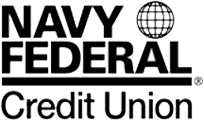Written by Ali Cybulski | Published on 10/11/2024
Navy Federal Credit Union was founded during the Great Depression in 1933 and has grown from seven members to more than 13 million with military ties. That includes service members from all military branches plus veterans, Department of Defense employees and their families. With $177.7 billion in assets, Navy Federal has 357 branches worldwide and a network of more than 30,000 free ATMs.
The Virginia-based credit union offers a full line of products, including savings accounts, checking accounts with debit cards, money market accounts, certificates — similar to certificates of deposit (CDs) at a bank — and more.
Savers have three account options: Share Savings, Money Market Savings or SaveFirst, a blend of a savings account and a certificate. The Share Savings Account requires a $5 minimum deposit and earns an annual percentage yield (APY) of 0.25%.
The SaveFirst Account has a $5 minimum deposit and terms of three to 60 months with an APY of 0.40%. Penalties apply for early withdrawals, and fees may reduce earnings.
Navy Federal also provides several choices of certificates. The Standard Certificate offers terms from three months to seven years and an APY as high as 4.35%, with a minimum deposit of $1,000.
The EasyStart Certificate has terms of 12 to 24 months, an APY of up to 4.25% and a $50 minimum deposit. Special EasyStart Certificates provide a special rate and require a low minimum deposit if you have a Navy Federal checking account and direct deposit. An APY as high as 4.70% is available on deposits of up to $3,000 for a 12-month term.
If you need a checking account, you can compare five types at Navy Federal — Free Active Duty Checking, Free Easy Checking, Free Campus Checking, Free Everyday Checking and Flagship Checking. Free Easy Checking requires a qualifying direct deposit but has no monthly service fee and no minimum balance requirement. It also gives you an APY of 0.05% and $120 in ATM fee rebates annually.
Digital banking features include mobile check deposits, account alerts, paperless statements, transfers, bill pay and more.
Customer support is available online or in person. Get live help by phone 24/7 at 888-842-6328, via chat from 9 a.m. to 9 p.m. Eastern time Monday through Friday, or by visiting a branch in person. You can also email a secure message or connect via Facebook or Twitter.
Navy Federal Credit Union pros and cons
Pros:
• Competitive certificate rates
• 30,000-plus ATM network
• 24/7 live customer support
Cons:
• Low savings rates
• Small branch network
• Membership required
Field of Membership Restrictions
Membership in Navy Federal Credit Union is open to members of active duty Army, Marine Corps, Navy, Air Force, Coast Guard, Army and Air National Guard, Department of Defense Officer Candidate/ROTC, Department of Defense Reservists, retirees from military service, Department of Defense civilian employees and contractors and retirees, U.S. Government Employees Assigned to Department of Defense Installations. Military veterans who were honorably discharged are also eligible. Membership is also open to immediate family of current members or those eligible for membership.
See current membership details
Incorrect Data Entered For Navy Federal
Data entered for NFCU is incorrectly entered by deposit accounts. It is ranked 5 stars by Bauer Financial. I have reported deposit accounts to Navy Federal and to the Consumer Financial Protection Bureau for furhter investigation. Deposits has had more than enough time to remove this page or to correct their data entry,
Never A Problem
I have had certificates at Navy for over 5 years and have never had a problem with Navy. I don't like the C- rating but Bauer has it at 5 stars based on their Dec 2023 reports
Health Rating?
I see the health rating is still a C- is this even accurate?
Up To 3 Business DAYS For An Outbound Wire Transfer?
Long time member of Navy Federal CU. Had a large certificate mature, and wanted to wire the funds to an external brokerage.
So, I sent a request via the Secure Portal as their process requires. 24 hours later..no response, so called in to ask status.
Surprise! Navy (unlike literally every other Financial Institution ON EARTH) wants "up to three business days" to initiate the transfer.
I've wired funds from dozens of Credit Unions, Banks, Brokerages, etc over the past 4+ decades and have NEVER seen an outbound wire take "up to 3 business days" to be initiated. In fact, every single wire I've ever sent has happened the same day.
Fortunately, my core checking account is ACH wired in, so I'm going to be forced to move the funds via "pull". (Like many, Navy limits what you can "push" via ACH).
I'm then going to need to wire from my core checking to where the funds were supposed to go in the first place.
Really, REALLY annoying. And something to be aware of in considering whether to have accounts at NFCU or not.
Data as of Q1 2025
Learn why bank health mattersHealth Grade Components
| Overall | |
|---|---|
| NCUA # | 5536 |
| Year Chartered | 1947 |
| Employees | 24368 |
| Primary Regulator | |
| Profit Margin | |
|---|---|
| Return on Assets - YTD | 1.05% |
| Return on Equity - YTD | 11.67% |
| Annual Interest Income | $3.11B |
| Assets and Liabilities | ||
|---|---|---|
| Assets | Q1 2025vs Q1 2024 | $190.2B$178B |
| Loans | Q1 2025vs Q1 2024 | $135.3B$125.5B |
| Deposits | Q1 2025vs Q1 2024 | $160.1B$151.4B |
| Equity Capital | Q1 2025vs Q1 2024 | $16.76B$14.26B |
| Loan Loss Allowance | Q1 2025vs Q1 2024 | $4.81B$4.81B |
| Unbacked Noncurrent Loans | Q1 2025vs Q1 2024 | $1.94B$1.96B |
| Real Estate Owned | Q1 2025vs Q1 2024 | $40.7MM$22.3MM |





